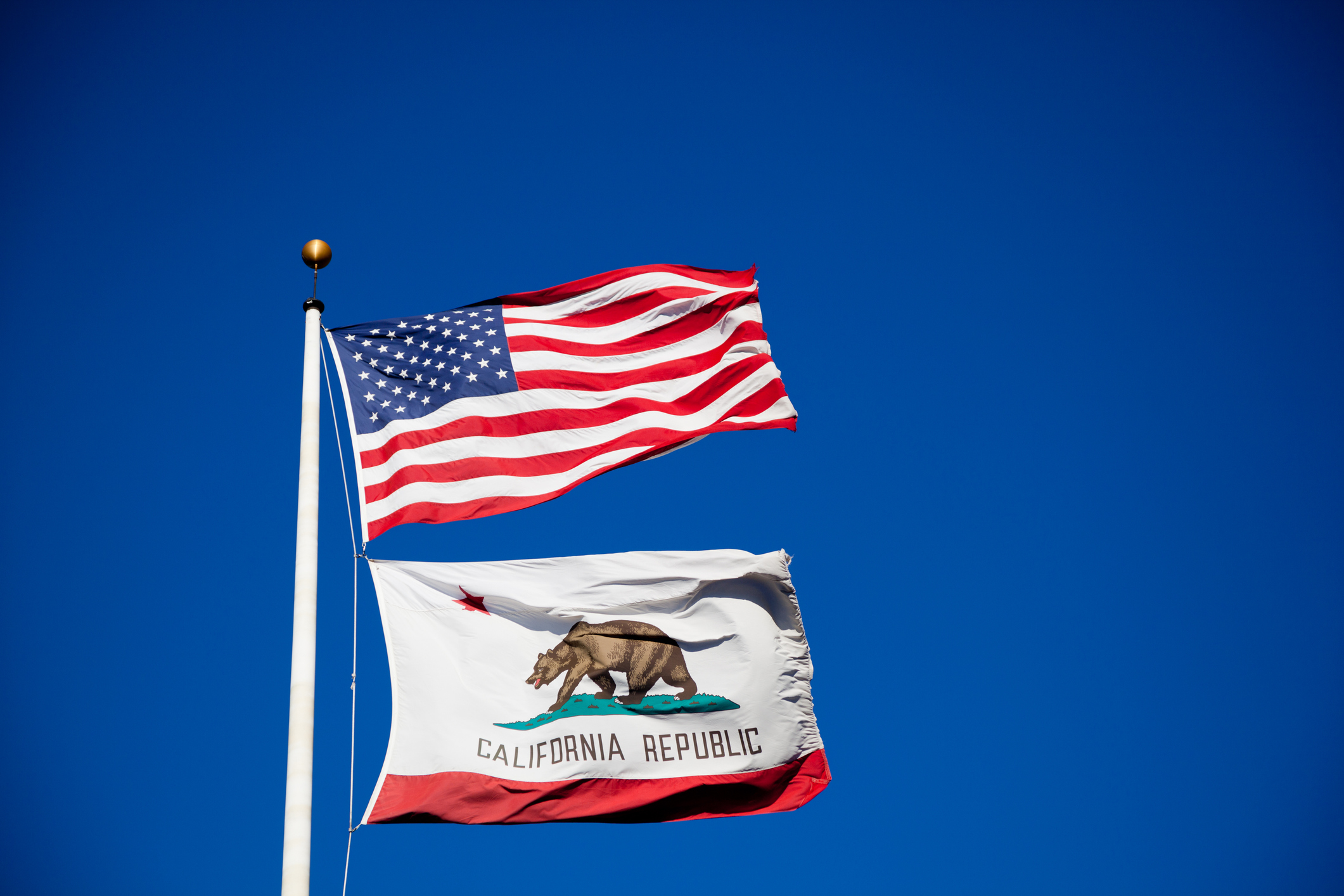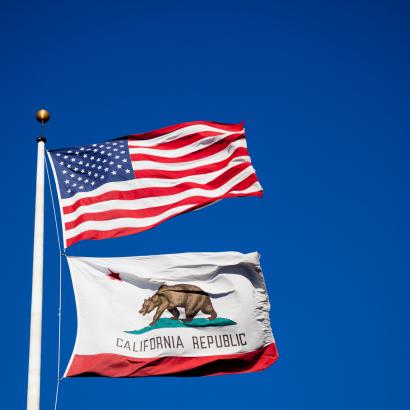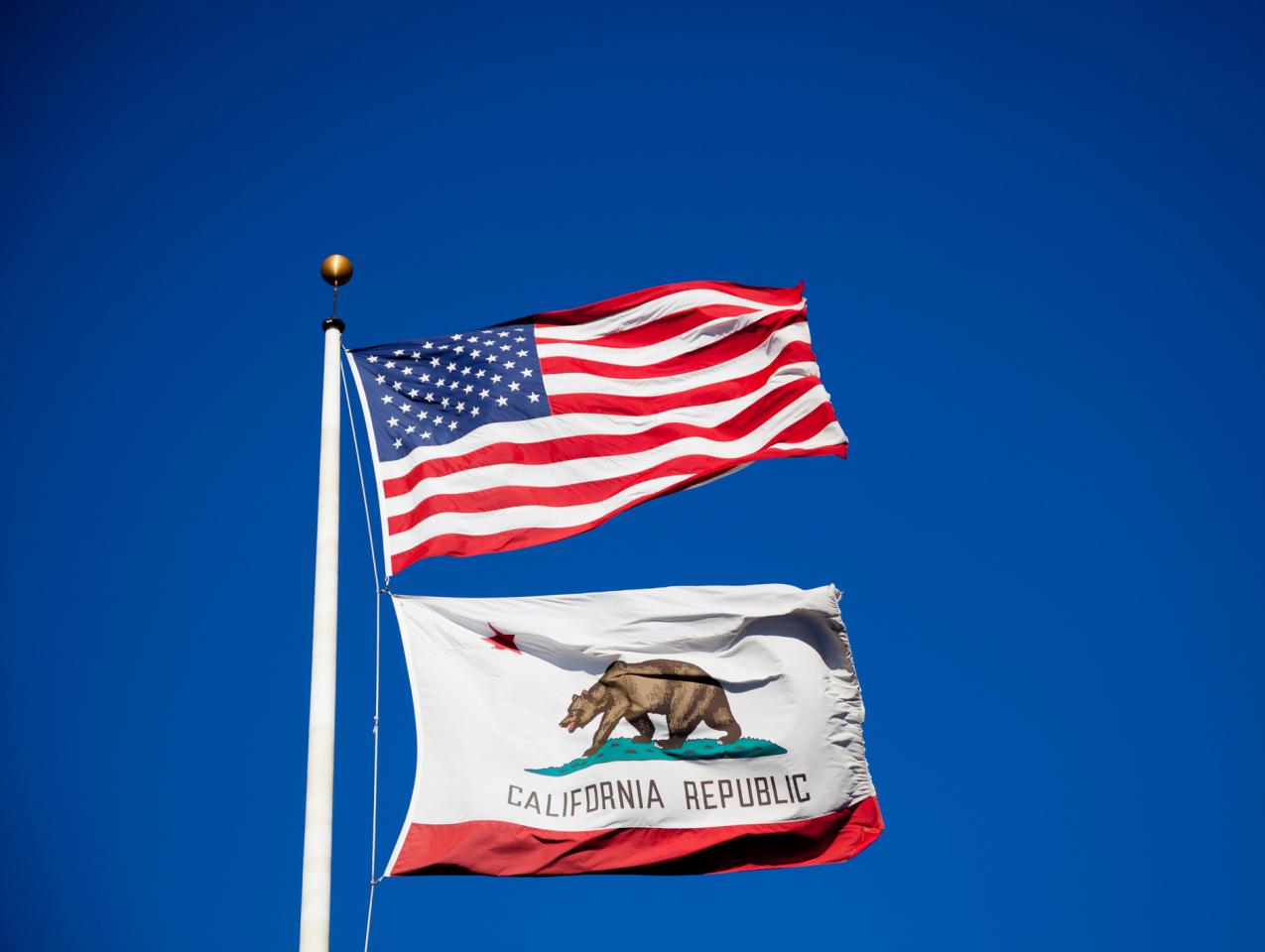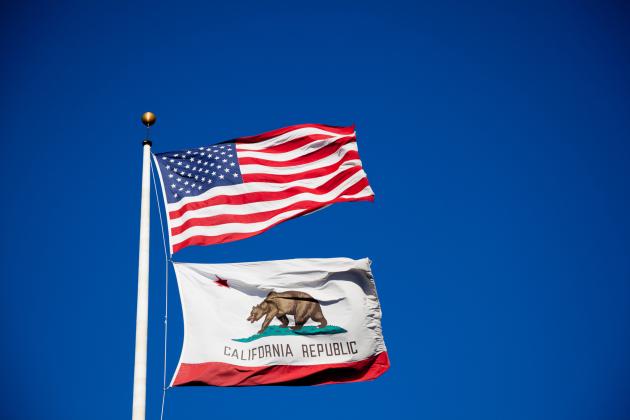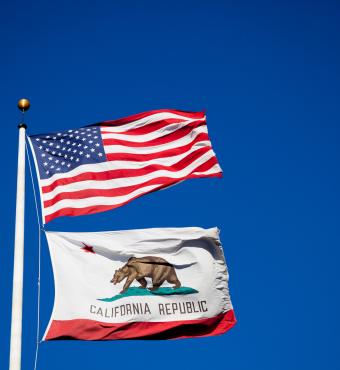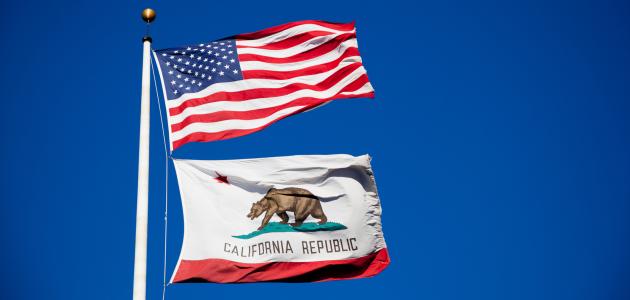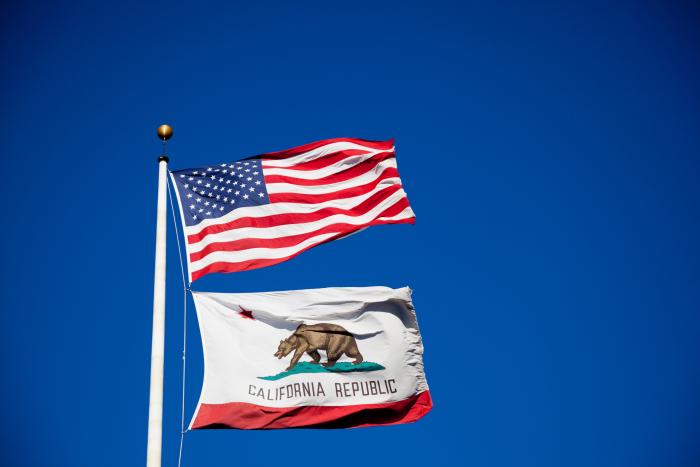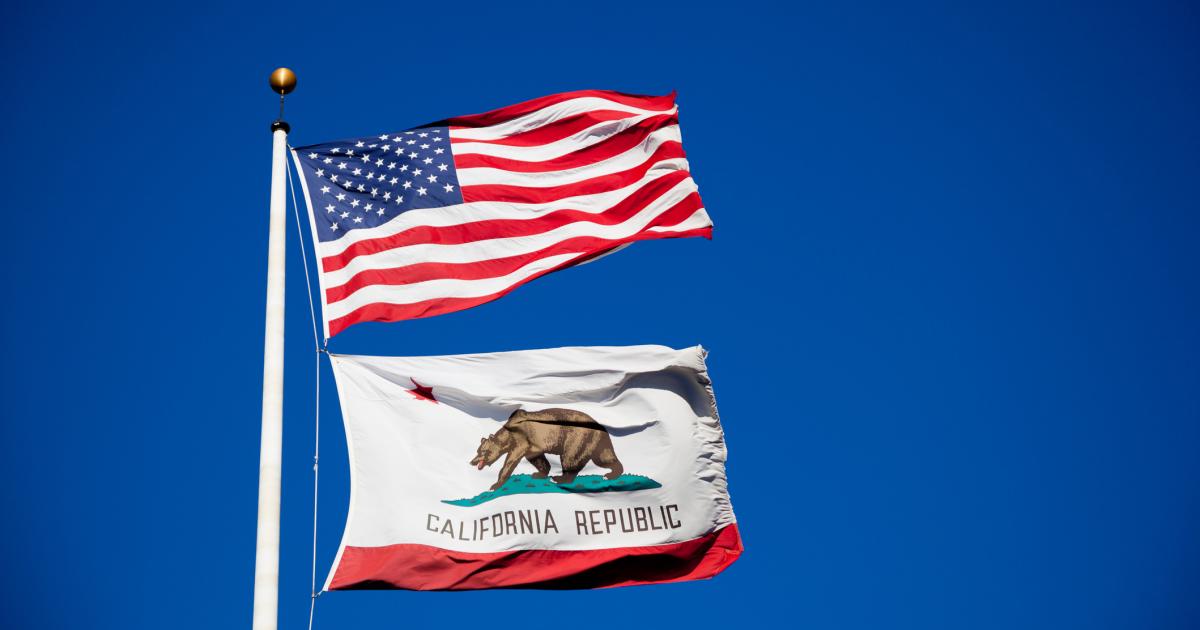- Politics, Institutions, and Public Opinion
- State & Local
- California
Governor Newsom: With comfortable Democratic supermajorities in the Legislature and a healthy budget surplus, you are in a great position to improve the lives of all Californians. As you form the boundaries of what you will and won’t do as governor, it is important to remember two great gifts from the Founders of our American democracy:
1. They created a federalist system that allows for, indeed encourages, interstate competition on every level of economic and social activity; and
2. Our government was specifically designed to frustrate the tyranny of a majority—once they are elected, our government officials represent all citizens, not only their supporters.
Economic Competitiveness
Governors act as a state’s CEO, and one of their most important responsibilities is being the state’s primary spokesperson and salesman. In this regard, you have your work cut out for you. By some measures, California’s economy is humming along, but Chief Executive magazine’s 2018 CEO survey ranked California the worst state in which to do business. The Small Business and Entrepreneurship Council rates how states’ public policies affect entrepreneurship, small business, and the economy, and their rankings consistently put California . . . dead last.
California’s high rate of taxation (forty-ninth worst by the Tax Foundation’s index) and high cost of living (fiftieth worst by McKinsey and Company’s quality-of-life measurement) are taking a toll. Businesses and people are leaving. Consultant Joseph Vranich estimates that from 2008 to 2016 over 13,000 businesses left California, taking with them $77 billion in investment and over 275,000 jobs. The US Census Bureau/Business Insider said in the same period over 1 million more people chose to leave California than move here.
Governor Newsom, you’re certain to face tremendous pressure to do more of everything, but just like a CEO of any enterprise, you will need to make difficult choices to allocate limited resources to our most important priorities. While the economy appears strong and the budget surplus seems plentiful, it’s important to recognize that the inevitable turn in the business cycle will come. Volatile state revenues from personal income and capital gains taxes will suffer. Ignoring economic cycles and saying “yes” to too many good ideas while the coffers feel flush is a classic error for CEOs of businesses and for governments.
So how can you avoid digging a hole for your governorship’s later years? The first step would be to avoid over-digging. A remarkable statistic is that California’s governors sign into law about 800 bills every year. Do we really need to change the law 800 times every year?
Most bills involve some form of state spending or mandate that creates costs for individuals and businesses. You will need to sort out which new laws and regulations we must have versus those that might be nice to have. Indeed, on the first day of the new legislative session, a hundred bills were proposed, which would spend over $40 billion from the state treasury. If passed, this “Day 1” legislation would result in a whopping 29 percent increase in our General Fund spending.
You could call a stop, or at least a slowdown, to the digging. Why not establish a specific and limited set of priorities and tell the Legislature you will only sign those bills consistent with these priorities? Fewer bills and fewer laws may allow more time and thought to be placed on new policies that will address California’s most pernicious, long-term policy failures, such as failing public schools that condemn generation after generation of poor and middle-class kids, a large and growing gap between California’s haves and have-nots, stratospheric housing prices and related homelessness, massive debt obligations for public employee retirement benefits, and inadequate infrastructure eroding our quality of life with untenable traffic and fear of drought, fire, and flood.
Likewise, you could establish a precedent that encourages our state government to think boldly about new policy solutions while still living within its means. Why not create a discipline in our state policymaking process by requiring that any new program proposal, or expansion of an existing program, include a specific statement explaining where the funding will be reallocated from? This would balance great ideas, such as early childhood development programs and free community college, with the sunsetting of old programs that have outlived their effectiveness.
This concept could be taken even a step farther. Currently, the California Environmental Quality Act (CEQA) requires rigorous and costly analysis and review of any new land use decision, such as an affordable housing development, a new solar farm, or a freeway expansion. However, no similarly rigorous analysis is required for new regulations and programs as to their impact on the cost of doing business or potential job losses. Perhaps such planning and forethought would ensure that only the most useful regulations and requirements are applied to our entrepreneurs and job creators before they leave California.
Surely, you’ll be vexed by an old problem in California: voters want high services, but they don’t want to pay for them. A recent poll by the Public Policy Institute of California said that the most important issue for all Californians was “jobs and the economy.” However, the same poll reports that 81 percent of California Democrats agree that “stricter environmental laws and regulations are worth the cost.”
This incongruity is now yours to navigate, and the new Democratic legislative giga-majority will provide you plenty of opportunities to balance the want for new programs, more regulation, and higher taxes with the need to maintain jobs and economic activity in our state. Failure to navigate these shoals will lead to more businesses, investment, and jobs to set sail from California, thus creating a downward economic spiral.
Representing All Californians
California has nearly 20 million registered voters: 8.6 million state their preference for the Democratic Party, and 11.2 million prefer something other than the Democratic Party. It may be hard to grasp in our deep-blue state, but in fact 56 percent of Californians are not Democrats.
Among those 11.2 million non-Democrats are 5.4 million voters who have rejected both major political parties, opting for “no party preference.” Another 1 million voters are registered with smaller third parties. In total, these 6.4 million California voters comprise one-third of the state’s electorate. They are expressing their disaffection with, and quite possibly their contempt toward, the entrenched political duopoly by refusing to fall in line with Republicans or Democrats.
Given the normal range of political attitudes in any large group, it’s reasonable that one-third of Democrats and Republicans are “moderates” who dislike the more extreme positions of either party’s leadership. If so, there are almost 11 million Californians who comprise a “practical majority” and who likely seek a more balanced approach to governing. Members of this practical majority tend not to be the types who will turn out for rallies and marches, but they care, they vote, and you need to be aware of their presence. In fact, the trend for “no partisan preference (aka “NPP” and previously known as “decline to state”) is on the rise. Since 1998, NPP registration has grown 4.4 times, a compounded annual growth rate of almost 9 percent for twenty years.
Perhaps more important, young people are also increasingly nonpartisan. Since 2016, teenagers have been able to preregister to vote, and almost 1 million of them have done so. It is encouraging to see these new citizens enthusiastically take up their civic duty. It is even more encouraging to see that almost 60 percent of these soon-to-be voters have exercised their desire to reduce partisanship and have registered their preference not to affiliate with either of the two major parties.
Within the confines of the State Capitol echo chamber you’ll hear a deafening roar of demands from factions of the majority to run up the state’s credit card, make bold changes, regulate behaviors of businesses and people, and figure out how to pay for it all later. I hope you’ll manage those demands and find a balance between what many would like to have with what the state must have to remain competitive.
The consequences of failing in this balancing act are great. When the impediments to building a home or starting a business or adding more employees become overly burdensome, businesses, jobs, investment, and people will leave. You may be told that our dynamic technology and entertainment industries will pull California through any downturn. However, a recent reminder of the free market’s relentless efficiency, is that Apple recently announced plans to invest $1 billion and over 5,000 jobs, not in Silicon Valley, but in a new Texas campus. Likewise, in 2017, the largest share of top 100 box office films were not made in California, but in Georgia.
As you evaluate the many ideas to: expand government assistance in health care, close the “spoken word gap” for preschool kids, increase environmental and worker protections, regulate manufacturers and charter schools—please consider that a large and growing bloc of California voters is disaffiliating with traditional partisan politics. These voters will reject left-wing (and right-wing) policies, hyperregulation, overtaxation, and massive new government programs that are out of step with the views of the practical majority.
Reinhold Niebuhr observed over seventy years ago, “Man’s capacity for justice makes democracy possible, but Man’s inclination to injustice makes democracy necessary.” Governor Newsom, the people of California have given you the opportunity to remember the Founders’ gifts. You can thank them by: (1) keeping our state’s economy vibrant so we can afford to further balance the playing field with policies to facilitate the economic mobility of all Californians, and (2) recognizing that many Californians are fatigued with excessive partisanship and simply want our political leaders to interact civilly and make sound long-term decisions that put people over partisan politics.
A great many disaffected voters might agree: that’s not too much to ask.
John Pimentel, a Silicon Valley sustainability entrepreneur/investor, has launched efforts to create and grow a new political movement in California to meet the needs of voters who are not adequately served by the two existing political parties. A California native, Pimentel graduated from UC Berkeley and Harvard Business School.







